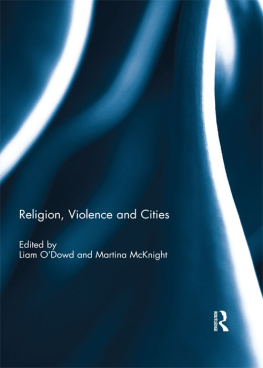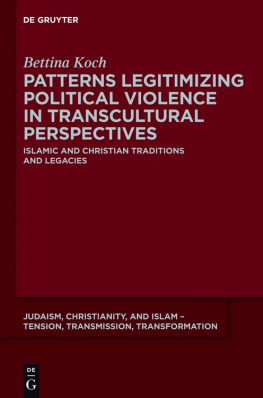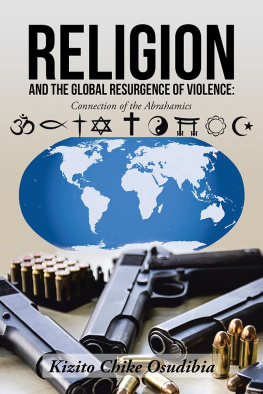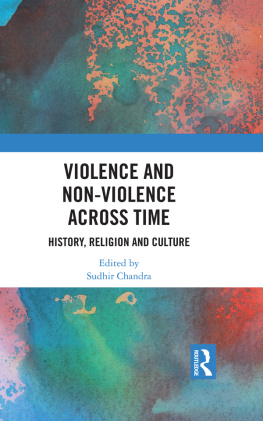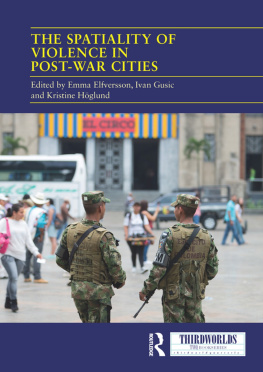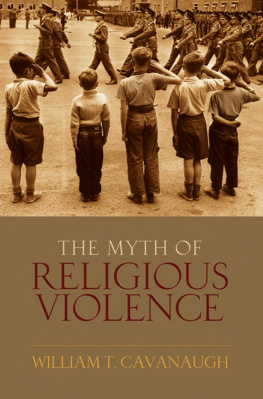Religion, Violence and Cities
In exploring the connections between religion, violence and cities, the book probes the extent to which religion moderates or exacerbates violence in an increasingly urbanised world. Originating in a five year research project, Conflict in Cities and the Contested State, concerned with Belfast, Jerusalem and other ethno-nationally divided cities, this volume widens the geographical focus to include diverse cities from the Balkans, the Middle East, Nigeria and Japan. In addressing the understudied triangular relationships between religion, violence and cities, contributors stress the multiple forms taken by religion and violence while challenging the compartmentalisation of two highly topical debates links between religion and violence on the one hand, and the proliferation of violent urban conflicts on the other hand. Their research demonstrates why cities have become so important in conflicts driven by state-building, fundamentalism, religious nationalism, and ethno-religious division and illuminates the conditions under which urban environments can fuel violent conflicts while simultaneously providing opportunities for managing or transforming them.
This book was published as a special issue of Space and Polity.
Liam ODowd is Professor of Sociology and Director of the Centre for International Borders Research at Queens University Belfast. He was co-investigator for the ESRC-funded project Conflict in Cities and the Contested State (200713), Grant No. RES060250015. He has published extensively on borders, urban conflicts, the Northern Ireland conflict, nationalism and the role of intellectuals.
Martina McKnight is currently Research Associate at the Institute for Child Care Research, in the School of Sociology, Social Policy and Social Work at Queens University Belfast. Her research interests and publications are in the areas of gender, visual research methods and urban divisions.
Religion, Violence and Cities
Edited by
Liam ODowd and Martina McKnight
First published 2015
by Routledge
2 Park Square, Milton Park, Abingdon, Oxon, OX14 4RN, UK
and by Routledge
711 Third Avenue, New York, NY 10017, USA
Routledge is an imprint of the Taylor & Francis Group, an informa business
2015 Taylor & Francis
All rights reserved. No part of this book may be reprinted or reproduced or utilised in any form or by any electronic, mechanical, or other means, now known or hereafter invented, including photocopying and recording, or in any information storage or retrieval system, without permission in writing from the publishers.
Trademark notice: Product or corporate names may be trademarks or registered trademarks, and are used only for identification and explanation without intent to infringe.
British Library Cataloguing in Publication Data
A catalogue record for this book is available from the British Library
ISBN 13: 9781138821262
ePub eISBN 13: 9781317585930
Mobipocket/Kindle eISBN 13: 9781317585923
Typeset in Palatino
by RefineCatch Limited, Bungay, Suffolk
Publishers Note
The publisher accepts responsibility for any inconsistencies that may have arisen during the conversion of this book from journal articles to book chapters, namely the possible inclusion of journal terminology.
Disclaimer
Every effort has been made to contact copyright holders for their permission to reprint material in this book. The publishers would be grateful to hear from any copyright holder who is not here acknowledged and will undertake to rectify any errors or omissions in future editions of this book.
Contents
Liam ODowd and Martina McKnight
Nezar AlSayyad
Colette Harris
Britt Baillie
Robert M. Hayden
Wendy Pullan
Liam ODowd and Martina McKnight
Ian Reader
The chapters in this book were originally published in Space and Polity, volume 17, issue 3 (December 2013). When citing this material, please use the original page numbering for each article, as follows:
Chapter 1
Religion, Violence and Cities: An Introduction
Liam ODowd and Martina McKnight
Space and Polity, volume 17, issue 3 (December 2013) pp. 261269
Chapter 2
The Fundamentalist City, Medieval Modernity, and the Arab Spring
Nezar AlSayyad
Space and Polity, volume 17, issue 3 (December 2013) pp. 270283
Chapter 3
Violence in a Religiously Divided City: Kaduna, NigeriaFrom the Sharia Riots of 2000 to the Post-election Clashes of 2011
Colette Harris
Space and Polity, volume 17, issue 3 (December 2013) pp. 284299
Chapter 4
Capturing Facades in Conflict-Time: Structural Violence and the (Re)construction Vukovars Churches
Britt Baillie
Space and Polity, volume 17, issue 3 (December 2013) pp. 300319
Chapter 5
Intersecting Religioscapes and Antagonistic Tolerance: Trajectories of Competition and Sharing of Religious Spaces in the Balkans
Robert M. Hayden
Space and Polity, volume 17, issue 3 (December 2013) pp. 320334
Chapter 6
Bible and Gun: Militarism in Jerusalems Holy Places
Wendy Pullan
Space and Polity, volume 17, issue 3 (December 2013) pp. 335356
Chapter 7
Urban Intersections: Religion and Violence in Belfast
Liam ODowd and Martina McKnight
Space and Polity, volume 17, issue 3 (December 2013) pp. 357376
Chapter 8
Murder on the Tokyo Subway: Nerve Centres, Religion and Violence
Ian Reader
Space and Polity, volume 17, issue 3 (December 2013) pp. 377392
Please direct any queries you may have about the citations to clsuk.permissions@cengage.com
LIAM ODOWD and MARTINA McKNIGHT
Abstract.The catalyst for this special issue was a symposium entitled Religion, Violence and Cities, held under the auspices of a five year inter-disciplinary research project on ethno-nationally divided cities. The rationale of the Special Issue is to examine how this religious dimension exacerbates (or moderates) urban violence within a broad comparative context. Although three of the following articles are informed by Project research, we draw the net wider to encompass a broader geographical spread from the Balkans, the Middle East, Nigeria and Japan.
Introduction
The underlying theme of the Special Issue seeks to bridge two hitherto rather distinct literatures. The first is a product of growing international research and debate on the relationship between religion and violence (see, for example, Cavanaugh, 2009; Friedland, 2001; Juergensmeyer and Kitts, 2011). The result has been a renewed questioning of how we define and understand religion, secularism and the relationship between the two. There has also been a renewed scrutiny of the relationship between religion and politics and the capacity of religions to foment violence or promote peace-building (see, for example, Beck, 2010; Brewer et al., 2010; Van der Veer and Lehmann, 1999). The second literature reflects the burgeoning research on urban violence

